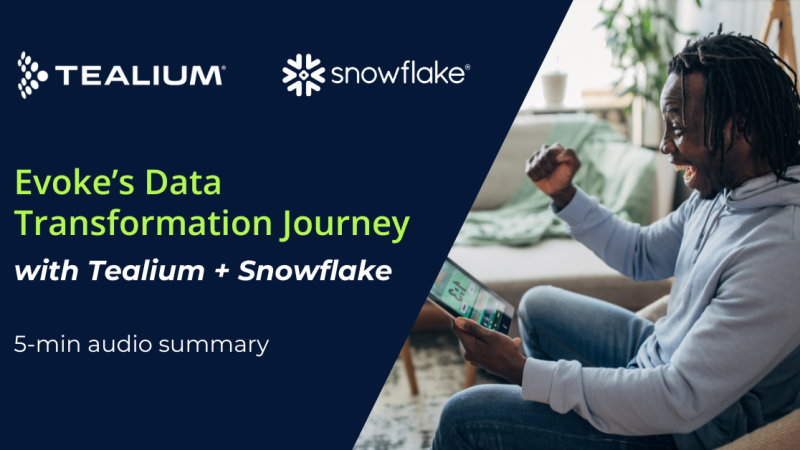Disclaimer: The information provided here is not intended to be, and does not constitute, legal advice. This is merely our point of view. Before acting on the information provided in this blog post, customers should seek their own legal advice.
Background
If you are a pharma commercial leader paying attention to the news, you must have noticed the increased scrutiny around direct-to-consumer (“DTC”) pharma advertising. For example, on the legislative side, the Sanders-King bill titled ‘End Prescription Drug Ads Now Act’ has been receiving a lot of attention.
Regardless of whether such efforts prove to be successful, there has not been this much focus on DTC pharma advertising in at least 15 years. If such scrutiny continues, it is possible that DTC pharma advertising could be restricted to some degree. Although this poses challenges to traditional commercial approaches, it also offers an opportunity for pharma manufacturers to rethink their customer engagement strategies.
In this blog post, we will look at how life sciences marketers can modify their Healthcare Professional (“HCP”) engagement strategy to adapt to potential DTC advertising restrictions. Be aware that there are ways to complement this HCP strategy with first-party patient engagement that is driven by patient intent. The focus of this blog post is improved HCP engagement.
Let’s dive in!
Why HCP Engagement Matters More Than Ever
If DTC advertising were to become difficult or more restrictive, HCPs may very well become the primary source of therapeutic information to a large number of patients. In a world where patients no longer learn about symptoms and treatment options via advertising channels, it would fall to the HCPs to play a more active role in creating awareness around symptoms, treatment options, and patient support programs.
While some patients would continue to play an active role in their own healthcare by proactively researching symptoms online and discussing these symptoms and treatment options with their provider, it may not be the case for patients with conditions that present with vague or easily dismissed symptoms. Patients may also remain unaware of new therapies for their medical conditions.
In the absence of DTC advertising through traditional media channels, the HCP may very well become the only source of therapeutic information to certain types of patients. This is especially true for underserved and rural patient communities, where digital literacy may be limited.
HCP Engagement Challenges
HCP engagement is far from being a novel concept in pharma. Many pharmaceutical companies already engage HCPs in some shape or form.
Such engagement may happen through one or more of the following channels:
- Sales reps
- Webinars
- Medical conferences
- Brand websites dedicated to HCPs
The issue with HCP engagement usually isn’t a lack of engagement channels, but rather that these channels are not aligned to deliver the personalized and timely engagement that HCPs are expecting. A recent study by Deloitte illustrates this problem.
HCPs have preferences around whether or when they want to see sales reps, on what channels they receive therapeutic information, etc. However, even HCPs who are reluctant to see sales reps do seek out information through other channels, such as pharma brand sites and third-party research sites. If pharma brands want to engage HCPs effectively, it may be important to meet them where they get their information rather than using a one-size-fits-all approach.
Tools For Effective HCP Targeting and Engagement
Now that we have established the important role HCPs may play in educating patients, what is needed to engage HCPs effectively? As reviewed in the previous section, one of the major pain points that HCPs face is a lack of personalization in how they are targeted and the disjointed nature in which they are engaged across various channels.
To solve this, the following can be part of the HCP engagement toolkit that pharma brands use:
- Identity resolution
Given the abundance of first-party digital channels (brand sites, apps, etc.) and the fact that an increasing number of HCPs interact with these channels, pharma companies would be wise to invest in consented HCP identity technologies that help them understand which HCPs are engaging with their digital touchpoints. Identity resolution is often a critical first step toward effectively engaging HCPs.
Once the HCP identity is resolved, it helps unlock the value of the data in which pharma companies may have already invested. This data may include HCP specialty, professional affiliations, referral patterns, demographics of patients treated by the HCP, etc. Once the identity of an HCP is known, this data can be brought to bear to truly create personalized experiences for HCPs in a way that resonates with them and speaks to the concerns of the patients they treat.
- Data Unification
We now know the identity of the HCPs engaging with digital touchpoints, and we also have data on the HCP that we can utilize. Then what? Just because you have the identity and other data on the HCP doesn’t mean the data is readily actionable. Data often sits in disconnected data silos across the enterprise. Prescription data, call center data, and HCP behavioral data may sit in disparate systems such as data warehouses, MDM, CRM, websites, etc.
What brands need is a mechanism to bring this data together to create a unified view of the HCP so that you know who they are, what patient demographics they treat, what content they are consuming across brand touchpoints and third-party touchpoints, and their preferences with regards to seeing sales reps, etc. By creating such a unified view, brands can serve HCPs with the relevant information they need.
- Precision Targeting of HCPs across the Omnichannel
We have already established that not all HCPs have the same preferences for consuming information. While they may engage many of the same channels (brand sites, sales reps, etc.), the path taken by HCPs before becoming a prescriber may vary significantly.
Regardless of the channel an HCP engages on, it is important to take into account the HCP’s preferences, professional affiliations, geographic location, current and past research behavior, prior engagement, etc., when engaging them. This way, pharma companies can create a personalized experience for that HCP.
The same goes for sales rep engagements. Equipping sales reps with insights on the HCP’s preferences and behavior would lead to targeted messaging, operational efficiency, and contextual conversations. Without these insights, reps risk engaging the wrong HCPs, engaging them at the wrong time, or using ineffective resources.
Advancements in identity technologies mean marketers need not wait for HCPs to visit the brand site before engaging them. Instead, HCPs can be engaged across third-party research sites that HCPs use as a first stop, and encouraged to visit the brand site for further information. With platforms like PulsePoint, Doceree, and DeepIntent, HCPs can be engaged offline. In some cases, HCPs can also be engaged on secure clinical platforms in appropriate contexts where HCP outreach is legally permitted.
The Role of the CDP in Orchestrating Omnichannel Engagement
Collecting and orchestrating the data flow across such disparate touchpoints requires a robust data foundation. This is where the Customer Data Platform (CDP) comes in. An enterprise-grade CDP such as Tealium for Pharma plays a vital role in engaging HCPs intelligently.
Benefits of CDP:
- Real-time data unification across HCP identities, field interactions with HCPs, digital touchpoints, clinical settings, first-party data stores (data warehouses, MDM), and third-party platforms
- Segmentation and orchestration at the individual HCP level to create personalized experiences and provide HCPs with the right information on the right channel so that they can educate and help their patients
- Consent management to enable privacy-centric HCP engagement
- Closed-loop measurement to optimize media campaigns, field effectiveness, digital interactions, content delivery, and improve operational efficiency.
Summary
As regulatory scrutiny could potentially transform DTC advertising, the pharma industry would be wise to enhance HCP relationships and engagement to ensure that HCPs are equipped to help with the information and resources needed to better support patients. This may be especially true for those patients for whom DTC advertising may be the primary source of therapeutic information and encouragement to begin conversations with providers.
While HCP engagement is not a new concept, engagement channels such as websites, field force, etc., are often not aligned to provide a seamless, personalized experience that HCPs might prefer pharma brands. Meeting HCPs where they get their information and delivering the resources they need to serve their patient populations is not only sound business strategy but would also lead to better treatment access.
Focusing on HCP identity resolution, data unification, and precision targeting of HCPs across the omnichannel would lead to effective HCP engagement with the potential to truly improve health outcomes for patients. An enterprise-grade real-time CDP plays a pivotal role in unifying siloed HCP data sources, segmenting and orchestrating data to enable personalization, and measuring campaign effectiveness, conversion, etc., to improve operational efficiency. By choosing the right CDP, all these benefits can be realized in a manner that respects the HCP’s consent and privacy.
About Tealium
Tealium is a leading Customer Data Platform (CDP). Through the platform’s privacy features and willingness to sign a Business Associate Agreement with HIPAA-regulated customers, Tealium has been helping life sciences organizations connect HCP and patient-centric insights data across the omnichannel journey in a privacy-compliant manner.
Tealium’s turnkey integration ecosystem supports more than 1,300 built-in connections, including integrations with leading vendors such as IQVIA, PulsePoint, Veeva, and Doceree to help organizations get the most value from their tech stack and data investments.
To learn more about Tealium for Pharma, click here.
References








